Integrating AI with Flutter Apps: Building Smarter Mobile Applications
The AI-powered apps achieved over 1.49 billion downloads worldwide and generated nearly $150 billion in in-app purchase revenue .
This surge underscores the increasing demand for smarter, more intuitive mobile experiences. AI enhances functionalities such as personalized recommendations, real-time language translation, and advanced image editing, transforming traditional apps into intelligent assistants that anticipate user needs.
Flutter, Google’s open-source UI toolkit, has emerged as a leading framework for building natively compiled applications across mobile, web, and desktop platforms from a single codebase. Its flexibility and performance make it an ideal choice for integrating AI capabilities. The synergy between AI and Flutter enables the creation of intelligent applications that cater to the evolving demands of users across various industries. Collaborating with an experienced development partner like a Flutter App Development Company ensures the seamless integration of AI-driven features into cross-platform apps, unlocking new dimensions of user engagement and innovation.
Top Tools and Libraries for AI Integration in Flutter
TensorFlow Lite

TensorFlow Lite is a lightweight version of Google’s TensorFlow library, designed for mobile and embedded devices. It enables running machine learning models directly on mobile devices with reduced computational overhead, making it ideal for mobile apps. If you’re developing an iOS or Android app with image recognition capabilities (such as a barcode scanner), TensorFlow Lite can help by processing images directly on the device in real-time without needing to connect to a server.
How It Works:
- TensorFlow Lite allows developers to convert TensorFlow models into optimised formats that run efficiently on mobile devices.
- It supports a wide range of machine learning models, from simple classification tasks to more complex image recognition and natural language processing (NLP).
Firebase ML Kit

Source: https://developers.googleblog.com/en/introducing-ml-kit/
Firebase ML Kit is a powerful mobile SDK from Google that offers a range of machine learning features designed for mobile app development. It provides pre-built models for image labeling, text recognition, and face detection, as well as tools for creating custom models.
If you’re building a language translation feature, Firebase ML Kit can automatically recognize text in images and translate it to different languages. This allows users to interact with text in real time, even in a foreign country, enhancing the overall app experience
How It Works:
- Firebase ML Kit includes APIs that can be easily integrated into your Flutter app, allowing developers to add AI features without needing deep machine learning expertise.
- It supports both on-device and cloud-based machine learning, offering flexibility depending on the complexity of your app’s requirements.
IBM Watson

Source: https://medium.com/ibm-watson/introducing-ibm-watson-studio-e93638f0bb47
IBM Watson is a suite of AI services that provide a variety of cognitive computing capabilities such as NLP, machine learning, and visual recognition. It’s a robust toolset for Flutter developers looking to integrate advanced AI functions into their apps.
A health app can integrate IBM Watson to analyze patient data, provide predictive insights on health conditions, or recommend personalized health tips based on user behavior and past records. Watson’s NLP capabilities can also enhance the app’s chat function by allowing more sophisticated conversational AI.
How It Works
- Watson offers cloud-based APIs that handle tasks like sentiment analysis, visual recognition, and language translation. It also allows you to train custom machine learning models to meet your specific needs.
- The integration with Flutter is made simple through various SDKs and APIs, allowing developers to easily leverage Watson’s AI capabilities within their mobile apps.
PyTorch Mobile

Source: https://rayniel.com/pytorch
PyTorch Mobile is an extension of the popular PyTorch machine learning library designed for mobile and embedded devices. It allows developers to run deep learning models directly on mobile devices, making it a great choice for real-time AI applications.
In a Flutter app focused on voice recognition or speech-to-text, PyTorch Mobile can be used to process audio data on the device and generate text responses without needing a server connection. This ensures faster, more responsive user interactions.
How It Works:
- PyTorch Mobile enables developers to use existing PyTorch models for mobile devices, converting them into formats that are optimized for mobile performance.
- It provides both iOS and Android support, making it an excellent choice for cross-platform development with Flutter.
CoreML
CoreML is Apple’s framework for integrating machine learning models into iOS apps. It’s optimized for performance and battery efficiency on iOS devices, allowing developers to run AI models on-device, without relying on cloud-based computations.
For an iOS-based Flutter app focused on augmented reality (AR), CoreML can help with object detection and classification in real-time, providing an interactive experience for users who can identify objects or scan items using their phones.
How It Works:
- CoreML supports a wide variety of machine learning models, including deep learning, decision trees, and support vector machines. Models can be trained in Python (using tools like TensorFlow or PyTorch) and then converted to CoreML format for use in iOS apps.
- With Flutter, CoreML can be integrated into iOS-specific features, such as real-time image recognition, facial recognition, and more.
Tool | Best For | Platform Support | Ideal Use Cases | Integration Complexity | Performance |
TensorFlow Lite | On-device machine learning, deep learning | iOS, Android | Image recognition, text classification, real-time analysis. | Moderate | High (Optimized for mobile) |
Firebase ML Kit | Fast AI integration with pre-built models | iOS, Android | Text recognition, image labeling, barcode scanning, face detection, translation. | Easy | High (Cloud and on-device support) |
IBM Watson | Advanced AI solutions, NLP, and custom models | iOS, Android (via APIs) | Customer sentiment analysis, health predictions, personalized recommendations. | High (via API integration) | High (Cloud-based, powerful models) |
PyTorch Mobile | Real-time AI, deep learning for mobile | iOS, Android | Speech-to-text, image recognition, object detection, NLP. | Moderate | High (Optimized for real-time use) |
CoreML | iOS-specific AI tasks, on-device processing | iOS | Object detection, image recognition, augmented reality, personalization. | Easy (iOS-native integration) | Very High (Optimized for iOS) |
Conclusion
As AI continues to reshape the future of mobile app development, its integration with Flutter has unlocked endless possibilities for creating smarter, more efficient applications. From real-time image recognition and speech-to-text functionalities to advanced NLP and personalized recommendations, these tools are revolutionizing the way apps interact with users, providing more intuitive and responsive experiences.
As industries continue to embrace AI for personalised experiences, data analysis, and predictive capabilities, integrating these tools into Flutter apps will become increasingly essential. The growing demand for smarter, more functional applications means that AI in mobile development is not just a trend but a critical shift in how we build and interact with technology. With these tools in hand, developers have the power to create groundbreaking, user-centred apps that cater to the evolving demands of the mobile-first world. To achieve this, businesses often seek skilled professionals to harness Flutter’s full potential—making it increasingly important to hire Flutter developers India who are adept at blending AI with cross-platform expertise.
SHARE THIS POST












